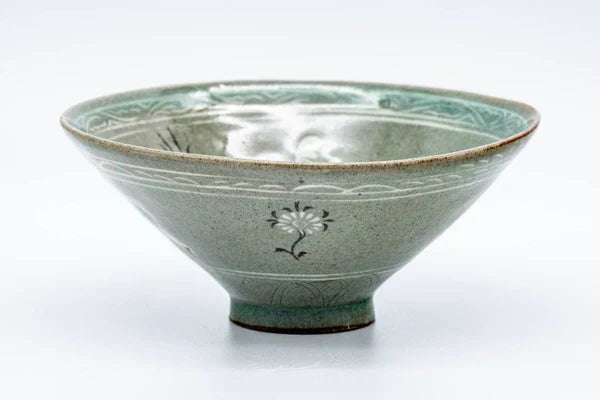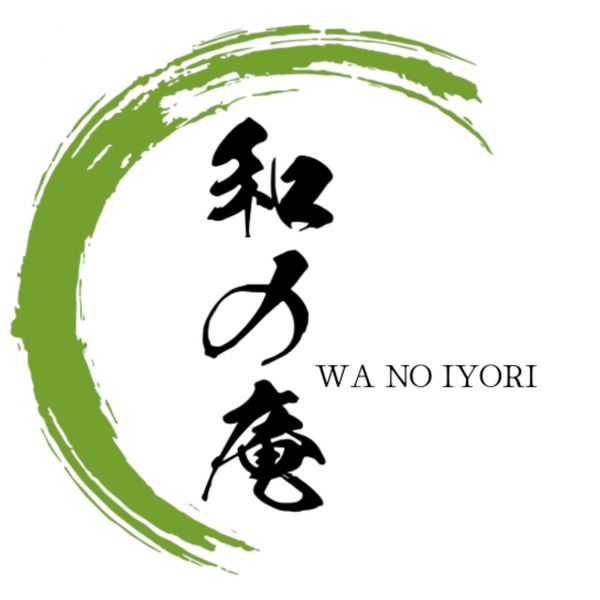
Chinese Chawan: Tenmoku, Seji Celadon & Sometsuke Tea Bowls - History & Significance
Share
Chinese Chawan (Karamono)
The earliest tea bowls widely used in Japan originated in China and were introduced to Japan along with tea and its associated culture during the late 12th to early 13th centuries. These imported Chinese tea wares, known as karamono (唐物 – Tang/Chinese Items), were highly prized by the Japanese upper class. This admiration led Japanese artisans to create imitations of these Chinese styles, which are also sometimes referred to as karamono, emphasizing their stylistic inspiration rather than their place of origin.
Tenmoku - 天目
Among the various karamono, tenmoku chawan are the most esteemed and formal tea bowls. Despite their Japanese name, these bowls originally came from Jianyang in the Song Dynasty (960–1279) in China. Japanese monks visiting the Buddhist temples on Tian Mu Mountain (天目山, "Tian Mu Shan" in Chinese) encountered these distinctive tea bowls used by Chinese monks. They brought some back to Japan, naming them tenmoku after the mountain where they discovered them. In modern Japanese, the term is pronounced tenmoku, which has become synonymous with these iconic tea bowls.
The original tenmoku chawan share a consistent shape and size, typically measuring about 12 cm in diameter and 7 cm in height. Their design features a deep, conical form with a groove around the lip and a small, refined foot.
Tenmoku chawan are renowned for their striking metallic glazes, which are classified into three main types:
- Nogime (禾目 - Hare’s Fur): The most common type, featuring streaks of blue or rust red.
- Yuteki (油滴 - Oil Spot): Characterized by small, glistening spots on a dark background.
- Yōhen (曜変 - Glittering Change): Displays large, silvery spots surrounded by iridescence.
Interestingly, the term tenmoku can refer not only to the original bowls and their replicas but also to the shape of the bowls or their various intricate glazes.
One of the most famous surviving examples is the Inaba Tenmoku (稲葉天目), one of the three yōhen tenmoku (曜変天目) considered National Treasures in Japan. Until recently, replicating the exquisite yōhen glaze effects had been a challenge. Another renowned example is the Fujita Tenmoku (藤田天目), which has been preserved with great reverence.
Modern interpretations of tenmoku include works like the Kyo-yaki yuteki tenmoku chawan crafted by Tanaka Kōsen (田中香泉), showcasing the enduring appeal of these beautiful tea bowls.
Seji (Celadon) - 青磨
Celadon, often referred to as greenware, encompasses high-fired stoneware or porcelain glazed in a translucent, pale bluish-green hue with subtle crazing. The origins of celadon trace back to the Shang Dynasty in China, but its popularity flourished during the Song Dynasty, particularly through the output of the Longquan kilns (龍泉, pronounced ryūsen in Japanese). These kilns produced celadon with simple, elegant shapes and delicate blue-green tones, which were highly valued in Japan.
Among the various celadons imported to Japan, Longquan pieces were especially cherished. Unlike some Chinese celadons, the glaze crazing on Longquan wares was subtle, enhancing their refined aesthetic.
One pivotal figure in the tea ceremony, Murata Shukō (or Jukō) (村田珠光), showed a preference for more modest, imperfect yellowish celadon bowls. These became known as Jukō Celadon and reflect the wabi-sabi aesthetic foundational to the Japanese tea ceremony.
A famous example of Longquan celadon is Bahōukan (馬蚊絆), a Japanese National Treasure admired for its timeless beauty and craftsmanship.
Sometsuke - 染付
Sometsuke refers to blue-and-white porcelain, a style characterized by cobalt-blue decorations applied beneath a transparent glaze. This technique became popular in 13th-century Jingdezhen porcelain production and eventually spread throughout Asia. In Japan, sometsuke is particularly associated with Arita-yaki porcelain.
While immensely popular in China during the Ming Dynasty, blue-and-white wares were less favored for tea use in Japan, where the older tenmoku and celadon styles held greater prestige.
An exceptional example is the Kimiidera Chawan (緋三井寺茶碗), a 15th-century Ming Dynasty rice bowl later repurposed as a chawan by the famed tea master Sen no Rikyū. This may have been the first recorded use of a sometsuke bowl as a tea vessel in Japan.
